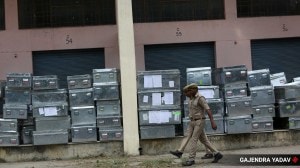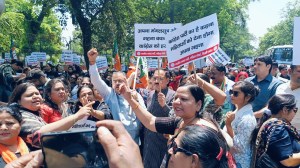- India
- International
More gender inequality in India than Pakistan, Bangladesh: UN
Among South Asian countries, India fares better than only Afghanistan which is at 152.
 India is placed 130 out of 188 on the Human Development Index (HDI) with Bangladesh at 142 and Pakistan at 147.
India is placed 130 out of 188 on the Human Development Index (HDI) with Bangladesh at 142 and Pakistan at 147.
India ranks 130 out of 155 countries in the Gender Inequality Index (GII) for 2014, way behind Bangladesh and Pakistan that rank 111 and 121 respectively, according to data in the United National Development Programme’s latest Human Development Report (HDR) 2015.
Among South Asian countries, India fares better than only Afghanistan which is at 152.
The index captures inequalities in gender-specific indicators: reproductive health measured by maternal mortality ratio and adolescent birth rates, empowerment quantified by share of parliamentary seats and attainment in education, and economic activity measured by labour market participation rate.
Pakistan and Bangladesh have a lower Human Development Index (HDI) than India and yet perform better on gender equality as measured by GII. India is placed 130 out of 188 on the Human Development Index (HDI) with Bangladesh at 142 and Pakistan at 147.
But with respect to each parameter on the gender index, India lags behind both its neighbours. Consider this:

* Merely 12.2 per cent of parliamentary seats are held by women in India as against 19.7 in Pakistan and 20 in Bangladesh.
* India is also beset with a high maternal mortality rate of 190 deaths per 100,000 live births as compared to 170 pregnancy-related deaths per 100,000 births in both Bangladesh and Pakistan.
* In percentage of women receiving secondary education, Bangladesh at 34 per cent far outperforms India at 27 per cent.
* On labour force participation rate for women, Bangladesh is at 57 per cent, India is at 27 per cent.
* In all the above indexes, India’s performance is way below the South Asian average.
The only parameter where India fares slightly better is the adolescent birth rate, which is the number of births per 1000 women aged 15 to 19 years. A lower adolescent birth rate indicates a female population that is more in control of its choices when it comes to marrying and conceiving late.
On this scale, India’s figures are much better than that of Bangladesh as well as the South Asian average, though Pakistan’s record is marginally better than India’s.
UNDP officials state that over the last couple of years, India’s GII values have improved slightly from 0.61 to 0.563. This is mainly due to improvements in maternal mortality rate and women’s representation in parliaments in this period though other indicators have remained stagnant.
The HDR 2015, which is focused on the issue of work, also documents a global drop in female labour force participation rate, which is the proportion of working-age population in paid employment or looking for paid work. “This is owing mainly to the steep reduction for India, from 35 per cent women in 1990 to 27 per cent in 2013, and China from 73 per cent to 64 per cent in the same period,” said Yuri Afanasiev, UNDP resident representative in India.
According to Renana Jhabwala, national coordinator, Self-Employed Women’s Association, women’s workforce participation, by virtue of its invisibility, is largely under-counted in much of the government surveys.
“For instance, these surveys fail to capture details on large number of women in agriculture since land is in the name of the man. Due to this invisibility in official data, such women are often bereft of benefits such loans or seeds which the land-holding men are eligible for. This creates in India what we call a ‘sticky floor’ situation where a majority of women cannot rise above a certain level of earnings, skills and benefits. It is the opposite of the what the West refers to as ‘glass ceiling’,” said Jhabwala.
Apr 24: Latest News
- 01
- 02
- 03
- 04
- 05







































